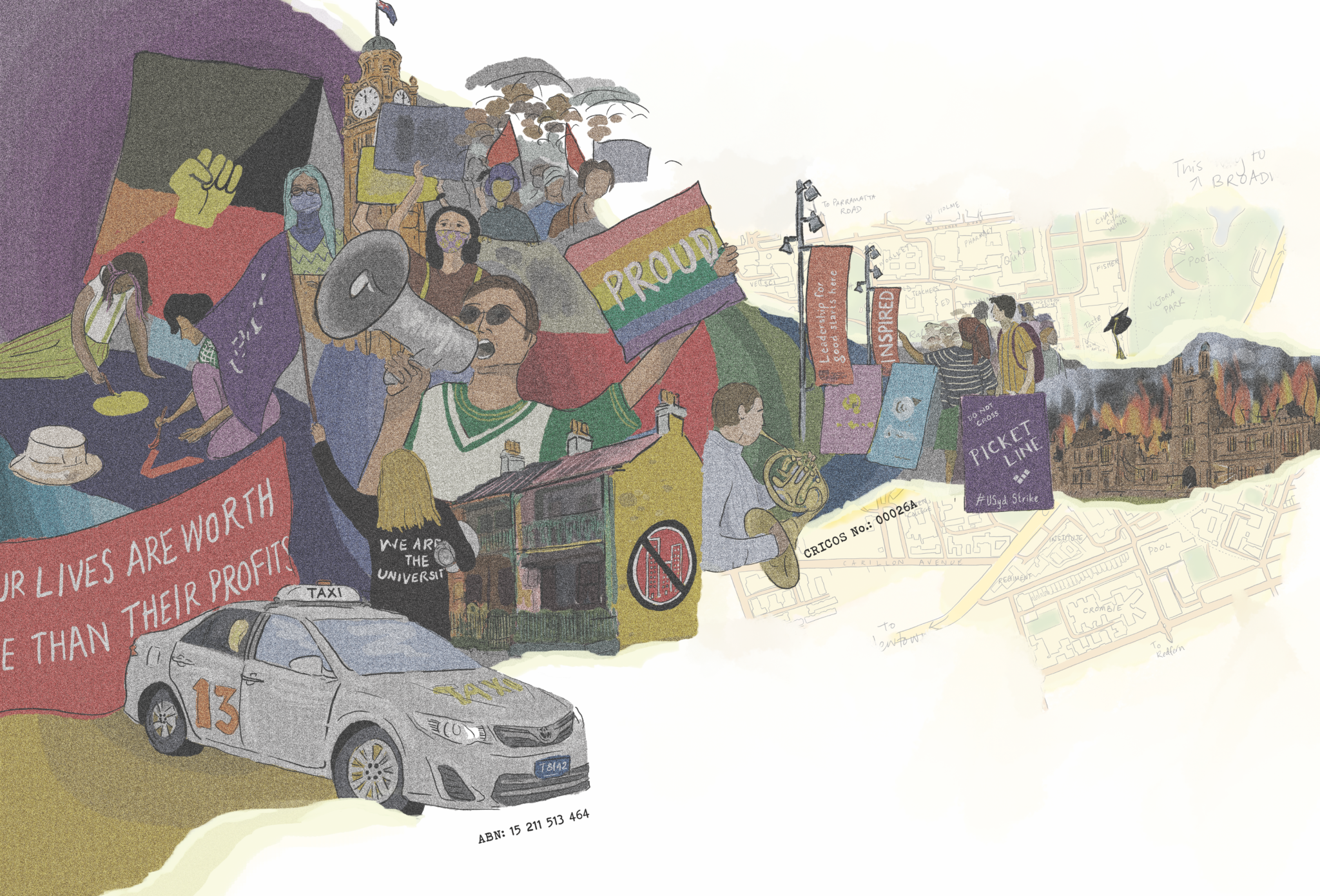Another strike week — the third this year — has passed. The gates of campus were once again barred with the bones and bravery of students and staff, mobilising with might to force management’s hands towards change. Towards pay equal to inflation, and paid gender-transition leave. Towards sustainable, permanent contracts.
In the wake of this, there is a collective sense that the state of the University has never been more compromised by extensive corporatisation.
“This University is becoming like a ghost town,” reads the editorial of a 1982 edition of Honi. “Everything is being closed down. Funds are drying up in the boomtown… There is a certain restlessness and anxiety — even fatalism — pervading the place. Every-one is worried for themself — both staff and students. No one knows what to expect tomorrow. Some don’t know if there’ll be a tomorrow.”
You would be forgiven for thinking that the above was written in 2022, rather than 40 years prior.
Despite so much time passing, the obstacles challenging our university education have changed little.
“The University is a place where you put your head down, pass exams, and get out,” it writes. “Academic staff are overworked trying to make up for staff cuts…Staff morale is sinking as they try to cope with the impossible.”
There is one critical difference between boomtown then and boomtown now: the funds are overflowing. In 2021, the University accrued a $1.04 billion surplus. What you may not know is that, in the same year, casual staff launched a $2.09 million wage theft claim against the University. The clear incongruence begs the question: why?
The modern University puts profits before education, time and time again. As a collective student body, whose interests are unwaveringly linked with that of academic staff, we must continue to push back, through our actions, articles and ambitions.
Honi is an archival luxury of student life, intellect, and anger. Past editions are a historical record of the droves of students who came before us, as told by them. I unreservedly encourage you to delve into past editions and read your forbears’ words, sympathise with their struggles, and learn from their experiences.
There is a solidarity in the history of Honi and USyd student activism — in knowing that students have stood in our shoes, fought our fights, and made it to the other side. The fight isn’t meaningless.





